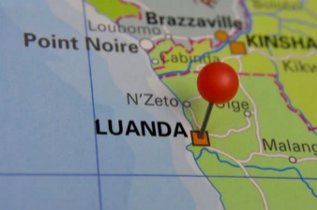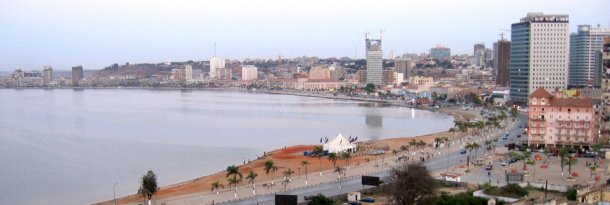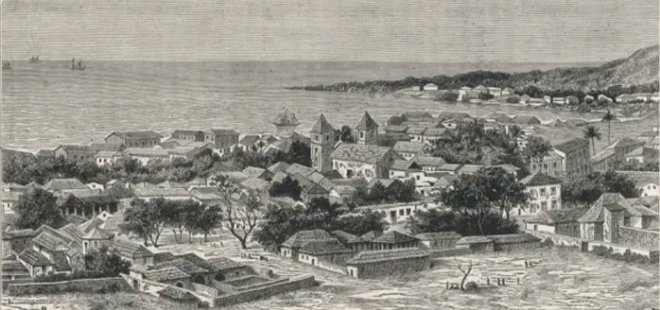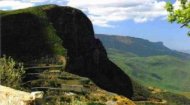|
Following Angola's independence from Portugal in 1975, Luanda became the capital of the newly established People's Republic of Angola. However when the Angolan Civil War (1975–2002) broke out on achieving that independence in November 1975, most of Portuguese fled the city back to Portugal or South Africa and the Angolan people flooded in ~ but without any of the requisite knowledge to run and maintain a city whose population stood at 475,000 to 500,000 people within its urban agglomeration on independence to the 10.03m (2025) of today, making it the third most populous Portuguese speaking city on the world, and Africa's fourth largest city.
The civil war devastated Luanda's infrastructure leaving deep scars on the city’s development, whilst the influx created mass slums flowing out from the centre of Luanda which was simply not able to cope with the millions heading towards it. By 2002 the conflict had stabilised and Angola's vast oil and diamond production helped reconstruct the city, leading to a period of rapid urbanisation, with remnants of colonial architecture standing alongside modern high-rises, symbolising the city’s complex past and evolving identity.
Luanda's population is culturally diverse, with ethnic groups including the Ovimbundu, Ambundu, and Bakongo, as well as a significant expatriate community. Portuguese is the official language, and widely spoken, as are local languages, Kimbundu, Umbundu, and Kikongo. The city's population is predominantly Christian (Catholic & Protestant) with smaller Muslim, indigenous, and other religious communities.
Luanda drives Angola’s economy, contributing significantly to the nation’s GDP. The city’s economy is heavily dependent on oil, which accounts for over 90% of Angola’s exports and employs many expatriates and locals. However, this reliance has led to economic instability when global oil prices fluctuate. As such, efforts are being made to diversify the economy, such as agriculture and tourism, alongside banking, telecommunications, and the hospitality sectors, but progress is slow. The rapid urbanisation has also led to a boom in real estate and development projects, but this rapid growth has led to overcrowded musseques (slums) where about 80% of residents live, with poor sanitation and limited access to clean water, standing next to luxury high-rises. In fact, income inequality in Luanda is stark. The high cost of living makes Luanda one of the most expensive cities in the world for expatriates while youth unemployment remains a critical issue.
Daily life in Luanda is a mix of fast-paced urban living and traditional Angolan culture. Traffic congestion is a major problem due to rapid urbanisation and underdeveloped road networks with minibus taxis (candongueiros) being the primary mode of transport for most residents. Local dishes like funge (cassava porridge), moamba de galinha (chicken stew), and calulu (fish stew) reflect Angola’s rich culinary heritage and Portuguese-influenced bakeries and seafood restaurants are popular in upscale areas, while Kizomba and semba music dominate nightlife, with clubs and bars offering live performances. Festivals (Carnival, Luanda Jazz Festival) further bring Luanda to life as do the informal markets thriving alongside luxury shopping centres.
While often overlooked by mainstream tourism, Luanda offers unique cultural and historical sites:
Fortaleza de São Miguel: Built in 1576 by Angola's first Captain-Governor Paulo Dias de Novais. St Michael's features ornate wall tiles that tell the story of Angola's history including its role as a holding place for slaves enroute to Brazil.
Museu Nacional da Escravatura (National Museum of Slavery): Features many relics of that trade and bizarrely is where many slaves were baptized before being transported to the Americas.
Museu Nacional de História Militar: Chronicles Angola’s struggle for independence and civil war through artefacts and exhibits.
Palácio de Ferro (Iron Palace): Worth a visit not least because it was designed by Gustave Eiffel and built in France and destined for Madagascar but was lost at sea and eventually drifted before being taken by the Portuguese and brought to Luanda. Today it is an art and cultural centre.
Mausoleum of Agostinho Neto: Honours Angola’s first president with striking modernist architecture.
Ilha do Cabo (Cabo Island): A scenic peninsula lined with beach huts, restuarants and bars, from where you can swim, surf or take in views of the city.
Marginal (Luanda’s Waterfront): A recently revitalised seafront promenade perfect for walking, dining, and sunset views.
|










